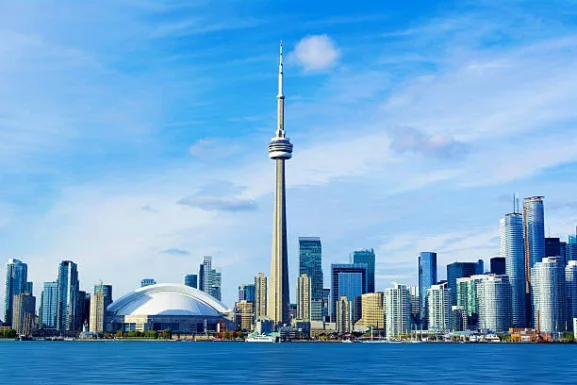Best Neighborhoods in Toronto for Opening a Retail Store
Toronto, Canada’s largest city and economic powerhouse, is a thriving hub for retail businesses. With its diverse population, strong consumer spending, and vibrant neighborhoods, the city offers endless opportunities for entrepreneurs looking to establish a retail presence. However, choosing the right location is critical to your store’s success. In this guide, we’ll explore the best neighborhoods in Toronto for opening a retail store, analyze key factors like foot traffic and rental costs, and provide actionable insights to help you make an informed decision.
Why Toronto is Ideal for Retail Businesses
Toronto’s retail sector is booming, driven by a growing population, high disposable incomes, and a strong tourism industry. According to recent data, the city’s retail market is expected to grow by 4.5% annually over the next five years. With over 6 million residents in the Greater Toronto Area (GTA) and millions of visitors each year, the city offers a vast customer base for retail businesses.
However, success in Toronto’s competitive retail landscape depends heavily on location. Factors like foot traffic, demographics, and rental costs vary significantly across neighborhoods, making it essential to choose a location that aligns with your business goals and target audience.
Key Factors for Choosing a Retail Location in Toronto
1. Foot Traffic Analysis
High foot traffic is a key driver of retail success. Neighborhoods with busy sidewalks, transit hubs, and popular attractions tend to attract more customers.
2. Demographics
Understanding the local population’s age, income, and shopping habits is crucial. For example, a luxury brand may thrive in affluent areas like Yorkville, while a family-oriented store may perform better in Danforth.
3. Rental Costs & Lease Trends
Commercial rent varies widely across Toronto. While prime locations like Queen Street West command high rents, emerging neighborhoods like Liberty Village offer more affordable options.
4. Competitor Analysis
Avoid oversaturated markets by identifying gaps in the local retail landscape. For instance, if a neighborhood lacks specialty coffee shops, it could be an opportunity for your business.
Top Toronto Neighborhoods for Retail Businesses
1. Queen Street West – The Trendsetter’s Paradise
Known for its eclectic mix of boutiques, art galleries, and eateries, Queen Street West attracts a diverse crowd. The area is particularly popular among young professionals and tourists seeking unique shopping experiences. Rental rates vary, with prime spots commanding higher prices due to demand.
- Why It’s Great: Known for its eclectic mix of boutique stores, Queen Street West attracts fashion-forward millennials and Gen Z shoppers.
- Foot Traffic: High, especially on weekends.
- Rental Costs: $5070 per square foot.
- Ideal For: Fashion, lifestyle, and artisan brands.
2. Yorkville – Luxury Retail Hub
As Toronto’s luxury district, Yorkville hosts high-end retailers and designer boutiques. The neighborhood appeals to affluent shoppers and international visitors. While rental costs are premium, the potential for high-margin sales can offset expenses.
- Why It’s Great: Home to high-end designer stores like Chanel and Gucci, Yorkville attracts affluent shoppers and international tourists.
- Foot Traffic: Moderate but high-value.
- Rental Costs: $100+ per square foot.
- Ideal For: Jewelry, high fashion, and exclusive experiences.
3. Kensington Market – Bohemian & Artsy Appeal
This bohemian enclave is celebrated for its vintage shops, artisanal goods, and multicultural ambiance. Kensington Market draws both locals and tourists seeking alternative retail options. Rental prices are relatively moderate, making it accessible for independent retailers.
- Why It’s Great: This vibrant neighborhood is known for its vintage shops, local artisans, and cultural diversity.
- Foot Traffic: Heavy on weekends, driven by tourism.
- Rental Costs: $30–$50 per square foot.
- Ideal For: Unique, handcrafted, and eco-friendly retail concepts.
4. The Distillery District – Historic & Upscale Market
Featuring restored Victorian industrial architecture, The Distillery District offers a unique setting for retailers. The area is pedestrian-only, enhancing its appeal as a shopping destination. It’s particularly bustling during events and festivals, providing seasonal sales boosts.
- Why It’s Great: With its cobblestone streets and heritage buildings, the Distillery District draws tourists and locals alike.
- Foot Traffic: High, especially during events and festivals.
- Rental Costs: 60-80 per square foot.
- Ideal For: Art galleries, specialty food stores, and experiential retail.
5. Danforth Avenue – A Community-Centric Hub
- Why It’s Great: This family-oriented neighborhood offers a strong local shopping culture and diverse demographics.
- Foot Traffic: Steady, with a mix of locals and tourists.
- Rental Costs: 25–40 per square foot.
- Ideal For: Small businesses, home essentials, and service-based retail.
6. Liberty Village – Toronto’s Startup & Tech Corridor
A revitalized industrial area, Liberty Village is now a hotspot for tech startups and creative agencies. The influx of young professionals has spurred demand for retail services, particularly those offering convenience and lifestyle products. Rental costs are moderate, with opportunities for growth as the area develops.
- Why It’s Great: This trendy neighborhood is home to young professionals and tech startups, creating demand for niche retail.
- Foot Traffic: Moderate but growing.
- Rental Costs: 3555 per square foot.
- Ideal For: Specialty coffee shops, co-working spaces, and tech retail.
7. Yonge & Eglinton – Growing Urban Hotspot
Dubbed “Yonge and Eligible,” this midtown intersection is undergoing significant development. The expanding residential and office spaces increase the customer base for retailers. Rental prices are on the rise but remain reasonable given the potential market size.
- Why It’s Great: One of Toronto’s fastest-growing areas, Yonge & Eglinton attracts upper-middle-class professionals.
- Foot Traffic: High, with a mix of commuters and residents.
- Rental Costs: 40–60 per square foot.
- Ideal For: Fitness studios, wellness brands, and premium home goods.
8. Leslieville
Once a hub for light industry, Leslieville has transformed into a trendy neighborhood with a strong sense of community. It’s home to a variety of shops, from home decor to fashion boutiques, catering to young families and professionals. Rental rates are competitive, reflecting its growing popularity.
Breakdown by Area
Neighborhood |
Foot Traffic |
Ideal Business Types |
|---|---|---|
| Queen Street West | High | Fashion, lifestyle, artisan |
| Yorkville | Moderate | Luxury, jewelry, high fashion |
| Kensington Market | Heavy (weekends) | Vintage, eco-friendly, handmade |
| The Distillery District | High (seasonal) | Art galleries, specialty foods |
| Danforth Avenue | Steady | Family-oriented, home essentials |
| Liberty Village | Moderate | Coffee shops, tech retail |
| Yonge & Eglinton | High | Fitness, wellness, premium goods |
Emerging Retail Trends in Toronto
- Omnichannel Retail: Combining online and offline sales channels to enhance customer experience.
- Experiential Retail: Creating interactive shopping environments to engage customers.
- Sustainable Practices: Offering eco-friendly products and adopting green business operations.
Financial Considerations
Rental rates in Toronto vary by neighborhood and property specifics. As of recent data, average commercial lease rates are:
-
Industrial Spaces: Approximately $16.90 per square foot annually.
-
Office Spaces: Around $20.09 per square foot annually.
-
Retail Spaces: Approximately $29.08 per square foot annually. trreb.ca
It’s essential to note that these figures can fluctuate based on market conditions and property features.
Conclusion & Next Steps
Choosing the right neighborhood is the first step toward building a successful retail business in Toronto. Whether you’re targeting luxury shoppers in Yorkville or eco-conscious millennials in Kensington Market, understanding local dynamics is key.
Key Takeaways:
- Match your business type with the neighborhood’s demographics and foot traffic.
- Consider rental costs and hidden fees when budgeting.
- Stay ahead of trends like omnichannel retail and sustainability.
Ready to take the next step? Research your preferred neighborhood, secure a lease, and start building your dream retail store in Toronto today!
FAQs
- What is the best neighborhood for a boutique store in Toronto?
- Queen Street West is ideal for boutique stores due to its trendy vibe and high foot traffic.
- Where can I find affordable retail space in Toronto?
- Danforth Avenue and Liberty Village offer relatively affordable rental options.
- How much does it cost to open a retail store in Toronto?
- Costs vary by neighborhood, but expect to pay 25–100 per square foot for rent, plus additional expenses like permits and inventory.
- What are the busiest shopping areas in Toronto?
- Queen Street West, Yorkville, and the Distillery District are among the busiest.
- How do I secure a commercial lease in Toronto?
- Work with a real estate agent specializing in commercial properties and negotiate lease terms to suit your budget.
Disclaimer:
The information provided in this article is for general informational purposes only and does not constitute professional advice. While efforts have been made to ensure the accuracy of the content, the author and publisher make no guarantees regarding the completeness or reliability of the information presented. Readers are encouraged to conduct their own research and consult with qualified professionals before making any business decisions related to opening a retail store in Toronto. The author and publisher disclaim any liability for actions taken based on the information contained herein.



